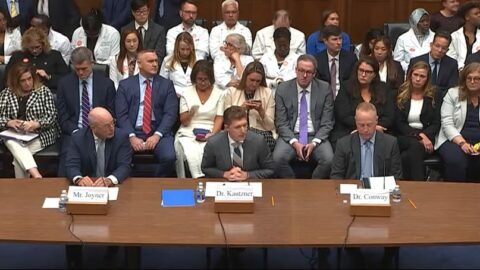One of the worst parts about living in 2024 is the widespread belief that seeking consensus is for suckers. The way to “win” is by ensuring that you can divide the world into allies and opponents, and making sure that you draw that line so that you have the bigger portion.
Everything is zero-sum. Everything is a fight. Everyone who is not with you is an enemy.
It’s a world without nuance and a world where unintended consequences abound.
I’m thinking about that today because I saw that Patients for Affordable Drugs has a new website up called fightpharma.org. It positions its cause as “Us vs. Pharma” and uses the word “fight” at least nine times on the home page alone.
I know that I am generally an industry partisan, but I was still struck here. Who would want to “fight pharma”? I mean, don’t we all share pharma’s goals? Isn’t the cause of medical innovation something that unites us?
That doesn’t mean that everyone ought to love the industry. I’m well aware that people don’t like huge parts of the business model of pharma, and even more people hate, generally, an American health care system that is rife with unintended consequences. We have problems to solve.
But it feels like the best way to solve those problems is with a serious discussion designed to garner some consensus, especially if you accept that we all want the same things, especially innovation and access.
Setting things up as “Us vs Them” is not the best way to get there.
It’s very 2024, though. It’s probably a huge hit with the Facebook crowd.
Sigh.
So the House Ways and Means Committee yesterday passed, unanimously, a telehealth bill that — in my narrow worldview — is actually a Trojan horse for PBM reform. It seems like it’s the meaningful kind of PBM reform, too. Here’s how Modern Healthcare described it: “The bill requires pharmacy benefit managers that work with Medicare Part D plans to de-link the compensation they pay themselves from the rebates they secure based on drugs’ high list prices. Rep. Brad Schneider (D-Ill.) said the provision will save the government about $500 million, although official estimates were not yet available.”
I once talked to a state lobbyist who told me they hated discussing the issue with lawmakers because it was just so dry and so boring. So I’m always on the lookout for anyone trying to make the topic sexy and fun. I don’t think this North Carolina effort quite gets to “sexy” or “fun,” but I do believe that the underlying strategy — leading with hospitals markups, and localizing the phenomenon — is probably the way to go.
Speaking of North Carolina, the guy behind the 340B effort there is Treasurer Dale Folwell, who is also going after obesity drugs. I assume that this is, in part, a play for political visibility. I mean, the 340B report got good local media coverage, but it doesn’t actually recommend any particular policy solutions. Anyway: I’d love to read a profile of that guy and exactly what the shot is here.
This anti-PDAB Maryland Matters op-ed by former AEI fellow James Glassman probably doesn’t break any new ground, but it’s well-constructed and worth the read. I suspect that PDABs may be the big non-election story of the next six months, so tracking on the conversations will be important.
Endpoints goes deep-ish on CVS Caremark’s move to push biosimilars over branded Humira, and the piece does a great job of documenting one hell of a success story. But the financials here are still somewhat shrouded. The Endpoint piece talks about “gross savings” (“gross” is a suspicious adjective there) and doesn’t get into the still-mysterious “rebate credit” scheme.
I’m not a big fan of stories comparing R&D spending to marketing spend or buybacks or whatever, because they’re always, always just tools in a larger ideological battle. I feel like I have to flag this piece in The Hill because it includes a myth that needs to be busted on a more-or-less continuous basis: “Big Pharma CEOs often cite investments in R&D to excuse charging U.S. seniors the highest prices in the world for life-saving medicines,” is how Accountable US Executive Director Tony Carrk framed it, except that … no one links drug prices to R&D spend any more. Drug prices are generally a function of value, not the cost to make ‘em.





